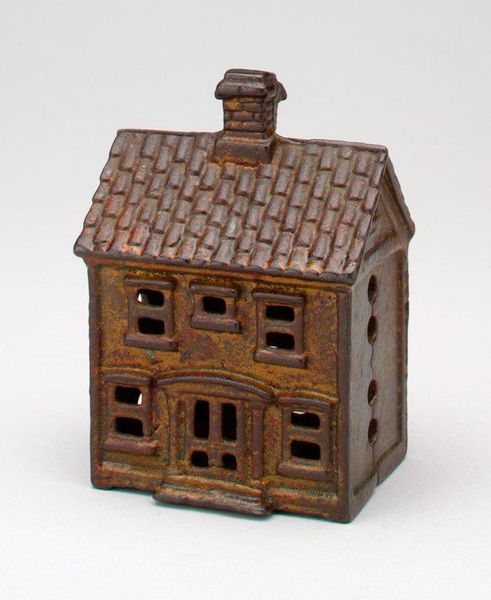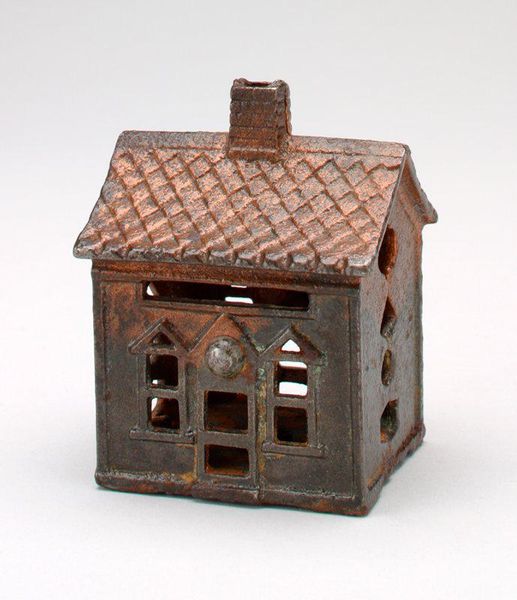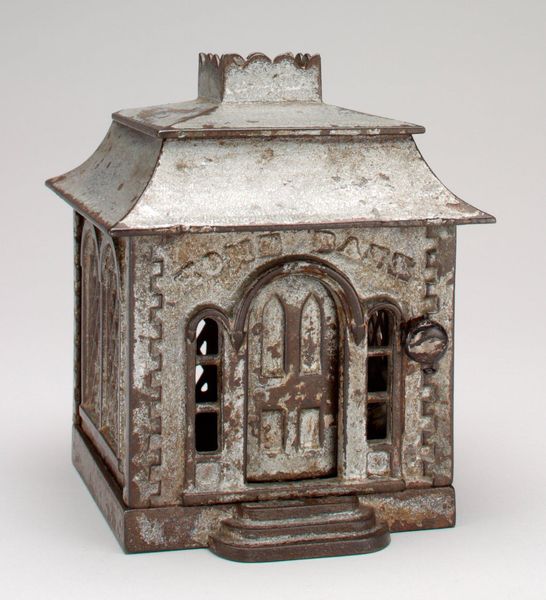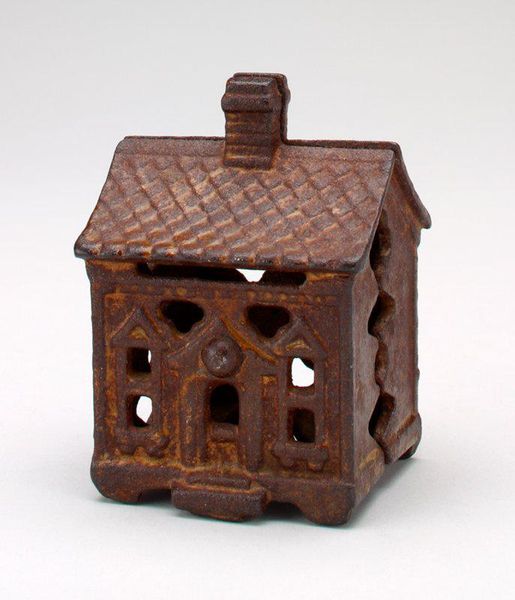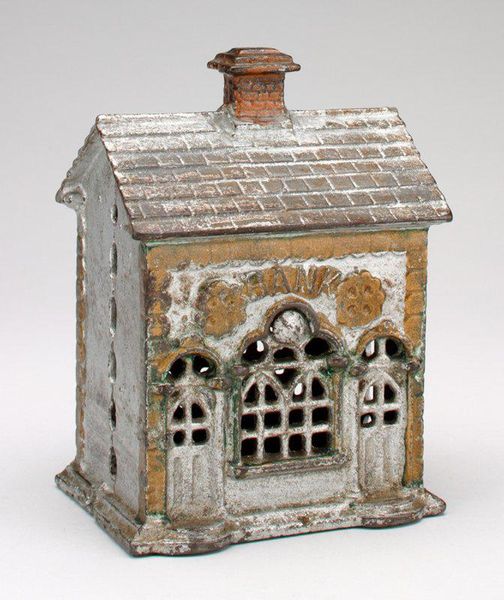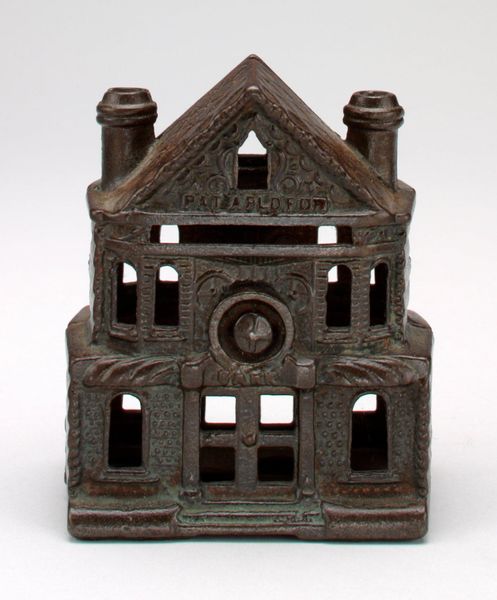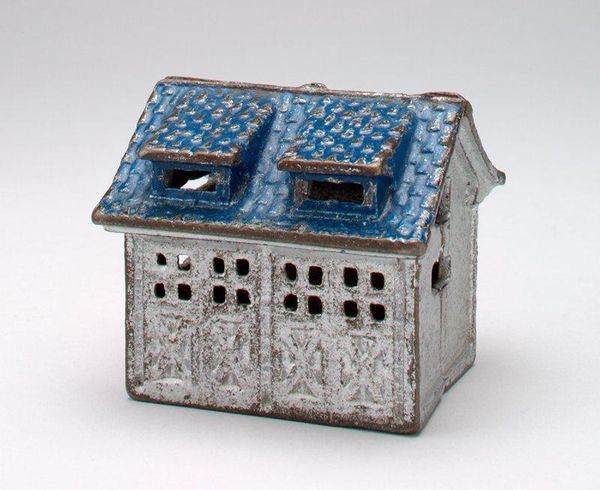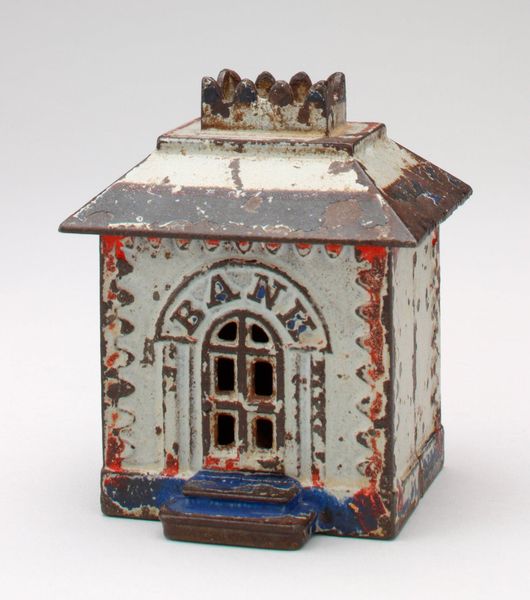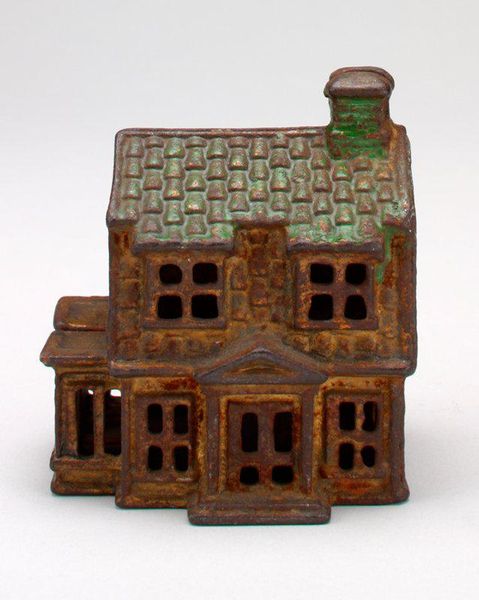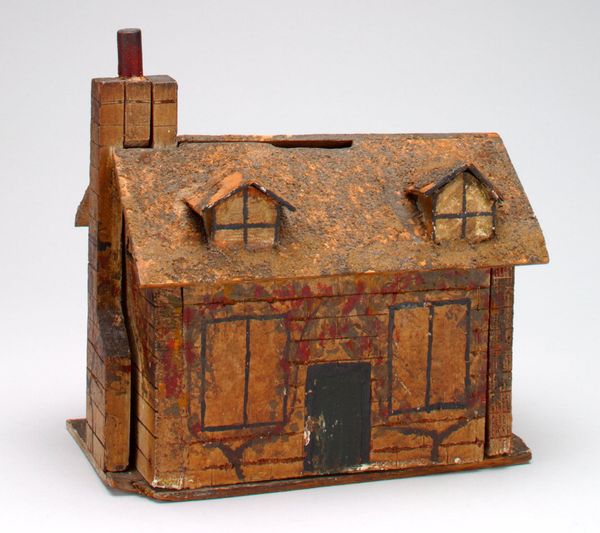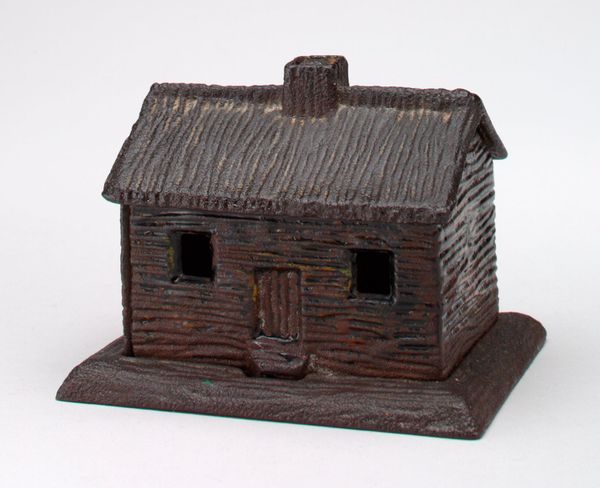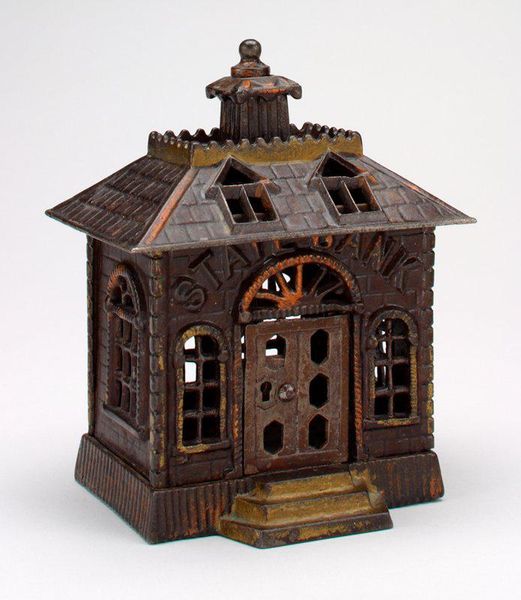
metal, found-object, sculpture
#
metal
#
stone
#
sculpture
#
found-object
#
geometric
#
sculpture
Dimensions: 3 1/4 x 2 1/16 x 1 15/16 in. (8.26 x 5.24 x 4.92 cm)
Copyright: No Known Copyright
Editor: This is E. Stevens' "-One-Story House- still bank," created around 1910. It’s made of metal and it's currently at the Minneapolis Institute of Art. It’s a small, simple sculpture of a house... It seems a little bleak. I'm curious, how do you interpret this work in terms of its historical context? Curator: That’s a good observation about its potential bleakness. Think about the turn of the century, the early 1900s. What was happening socially and economically that might be reflected in such an object? Was home ownership widespread, or aspirational? What did it mean to own a home, particularly a one-story house? Editor: So, this simple, metal house... was it potentially a symbol of hope or the American dream during that era? Maybe for working-class families aspiring to own property? Curator: Precisely. The fact that it’s a still bank is key. Saving money to buy a home speaks to the anxieties and dreams of a specific social class. Consider also the geometric forms: what do they communicate about industrialization and mass production at the time? Is it meant to evoke nostalgia or something more modern? Editor: It's interesting you mention industrialization; the somewhat rough finish doesn't quite match the precision of, say, Art Deco that would follow. So, this seemingly simple object actually contains multiple layers of social and economic meaning... Curator: Absolutely. The object’s cultural significance isn’t immediately apparent, but through careful examination, we can unpack a complex set of societal values embedded within this simple house. Think about how art and its distribution through museums reinforce certain values of ownership. Editor: I didn’t even consider the museum context... Thank you for drawing my attention to the many possible ways that art influences and is influenced by socio-political forces. Curator: My pleasure. It's all about considering art’s role in the broader cultural landscape.
Comments
No comments
Be the first to comment and join the conversation on the ultimate creative platform.
